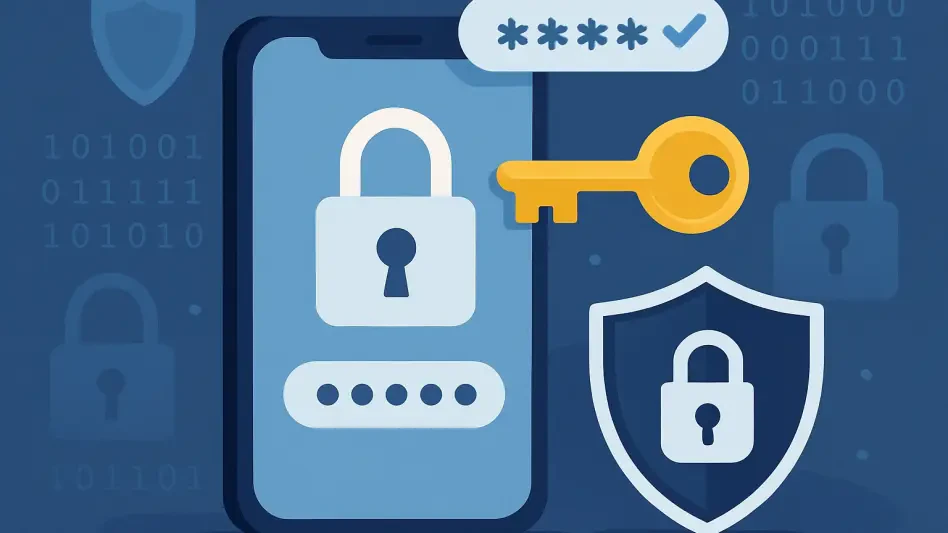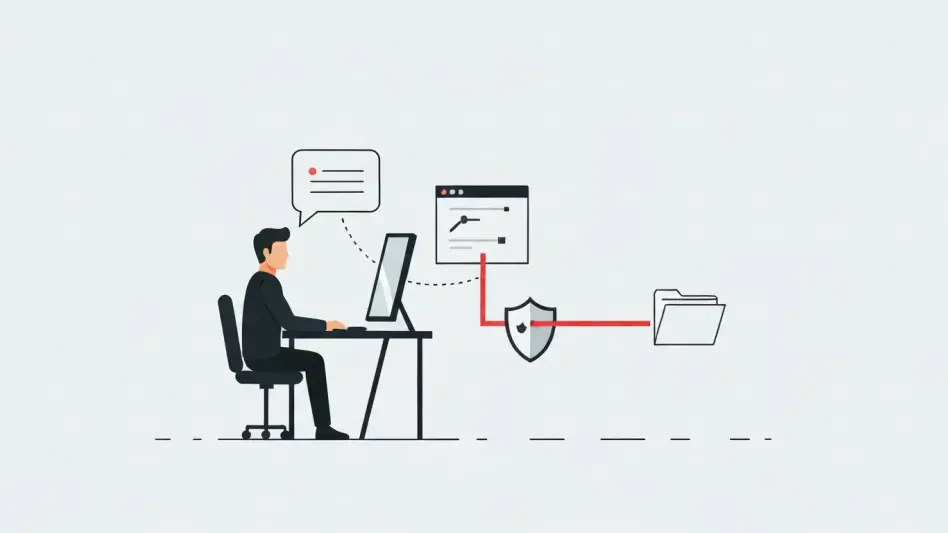In an era where digital security is paramount, a new and sinister threat has emerged for macOS users, shattering the long-held belief that Apple systems are inherently safe from cyberattacks. Known as Odyssey Stealer, this malware campaign employs a deceptive technique called ClickFix to infiltrate devices, marking a bold evolution in the tactics of cybercriminals. Initially discovered by X-Labs researchers in August of this year, the malware has shifted its focus from Windows to macOS, exploiting user trust through sophisticated phishing and social engineering methods. Rather than relying on traditional file downloads, it manipulates users into executing harmful commands directly in the Terminal application, a method that bypasses many conventional security defenses. This campaign targets highly sensitive information, including cryptocurrency wallet details, browser credentials, and personal files, posing a significant risk to both individual privacy and financial security. As this threat unfolds, it serves as a stark reminder of the evolving dangers in the digital landscape.
Understanding the Threat Landscape
Deceptive Entry Point
The ingenuity of Odyssey Stealer lies in its ability to exploit human behavior through seemingly harmless interactions that most users encounter daily. The attack often begins with a visit to a malicious website, such as “tradingviewen[.]com,” where users are presented with a fake CAPTCHA verification page. This page is designed to detect the operating system in use and provide tailored instructions specifically for macOS users. These instructions guide individuals to open the Terminal application using a familiar shortcut like Command+Space, copy a provided piece of malicious code, and execute it. This social engineering tactic capitalizes on the routine nature of CAPTCHA prompts, making it appear legitimate while tricking users into initiating the attack themselves. By avoiding traditional binary file downloads, the malware sidesteps many antivirus alerts, embedding itself silently into the system with minimal suspicion from the user or standard security tools.
Once the user executes the command, the malicious code decodes a Base64-encoded string, downloading and running an obfuscated AppleScript from a remote server. This script is the gateway for the malware to establish a foothold on the system, often without triggering immediate red flags. The process is deceptively simple yet highly effective, as it relies on the user’s own actions to activate the threat rather than exploiting a software vulnerability. This method highlights a critical shift in cyberattack strategies, where psychological manipulation plays as significant a role as technical exploitation. For macOS users, who may not be accustomed to such terminal-based threats, this approach is particularly dangerous, as it preys on a lack of familiarity with command-line risks. Security awareness must now extend beyond avoiding suspicious downloads to scrutinizing even the most mundane online prompts for potential malice.
System Access Tactics
A defining feature of this malware’s operation is its cunning request for elevated privileges, which grants it unrestricted access to the deepest parts of a macOS system. After the initial Terminal command is executed, users are prompted to enter their system password under the pretense of completing a verification process. This step is crucial for the malware, as it allows it to bypass security restrictions and delve into sensitive areas that are typically protected. By presenting this request as a routine or necessary action, the attack exploits the trust users place in familiar system dialogs. Once the password is provided, the malware gains the ability to harvest data that would otherwise be inaccessible, marking a severe breach of user security and privacy with potentially devastating consequences.
This tactic underscores the critical importance of skepticism toward unsolicited prompts for credentials, even those that appear to originate from legitimate system processes. The seamless integration of this request into the attack flow demonstrates a high level of sophistication, as it mimics the kind of interactions users expect during software updates or system checks. For many, the act of entering a password is second nature, often done without a second thought, which makes this method alarmingly effective. The broader implication is a need for enhanced user education on recognizing phishing attempts that go beyond obvious email scams and extend into system-level interactions. As cybercriminals refine these techniques, macOS users must adopt a more cautious approach to any request for sensitive input, no matter how routine it may seem.
Targeted Data and Impact
Cryptocurrency Focus
Odyssey Stealer exhibits a particularly voracious appetite for cryptocurrency-related data, reflecting the growing value of digital assets in today’s financial landscape. The malware specifically targets wallet extensions such as Electrum, Exodus, and Wasabi, which are commonly used across Chromium-based browsers like Chrome, Brave, and Edge. By infiltrating these extensions, it extracts private keys and other critical details that can lead to the irreversible loss of funds. This focus on cryptocurrency is no accident; with the rising adoption of digital currencies, attackers see a lucrative opportunity to exploit users who may not fully secure their assets. The precision with which the malware searches local storage and indexedDB directories for wallet information reveals a calculated intent to maximize financial gain.
The impact of such theft extends far beyond immediate monetary loss, as cryptocurrency transactions are often untraceable and irreversible once completed. Victims may find their savings wiped out in an instant, with little recourse for recovery due to the decentralized nature of these assets. This aspect of the malware’s operation serves as a wake-up call for users to implement robust security measures, such as hardware wallets or multi-factor authentication, to protect their digital wealth. Furthermore, the targeting of multiple wallet platforms indicates a broad net cast by attackers, aiming to ensnare as many users as possible regardless of their preferred tools. As digital finance continues to grow, the intersection of technology and security must be prioritized to shield users from such predatory threats.
Broad Data Theft
Beyond cryptocurrency, Odyssey Stealer casts a wide net over various types of personal and system data, amplifying its potential for harm. It harvests browser information, including cookies, saved login credentials, and autofill data from platforms like Firefox and Chromium-based browsers. Additionally, it targets personal files with extensions such as .txt, .pdf, and .docx located in Desktop and Documents folders, alongside critical system information from Safari cookies, Apple Notes, and macOS Keychain files. This comprehensive approach to data collection ensures that no aspect of a user’s digital identity is left untouched, creating a treasure trove of information for attackers to exploit in various malicious ways.
The ramifications of this broad data theft are profound, as stolen credentials and personal files can be leveraged for identity theft, unauthorized account access, or even sold on the dark web for profit. The inclusion of Keychain data, which often stores passwords and encryption keys, represents a particularly severe breach, as it can unlock access to numerous other services and systems. For macOS users, this underscores the importance of minimizing the storage of sensitive information in easily accessible locations and employing encryption where possible. The scale of data targeted by this malware highlights a pressing need for layered security practices that protect not just financial assets but the entirety of one’s digital footprint from such invasive threats.
Evasion and Stealth Techniques
Hiding from Detection
Odyssey Stealer employs advanced evasion tactics that make it a formidable challenge for even the most robust security systems to detect and analyze. One of its primary methods is the use of multiple layers of obfuscation, incorporating randomly generated strings to mask its code and hinder reverse-engineering efforts by researchers. This deliberate complexity ensures that the malware remains elusive, as traditional signature-based detection tools struggle to identify its constantly shifting patterns. By avoiding the use of standard executable files and instead relying on terminal commands, it further reduces the likelihood of triggering alerts from conventional antivirus software, blending into normal system operations.
The implications of these obfuscation methods are significant, as they reveal a growing sophistication among cybercriminals who are adapting to the capabilities of modern security solutions. This stealthy approach means that many users may remain unaware of an infection until substantial damage has already been done. Security vendors are now tasked with developing more dynamic detection mechanisms that can identify behavioral anomalies rather than relying solely on known malware signatures. For macOS users, this serves as a reminder that even trusted systems can harbor hidden dangers, necessitating vigilance and the adoption of proactive monitoring tools to catch such threats before they fully manifest.
Post-Theft Cleanup
After completing its data harvesting, Odyssey Stealer takes meticulous steps to cover its tracks, further complicating post-incident investigations. The malware compresses the stolen information into a ZIP archive, uploads it to a remote command-and-control (C2) server, and then deletes all temporary files from the infected system. This cleanup process is designed to eliminate forensic evidence, leaving little for security professionals to analyze in the aftermath of an attack. By erasing its footprints, the malware ensures that tracing its origins or understanding its full scope becomes a daunting task, often delaying effective response and mitigation efforts by affected parties.
This post-theft cleanup underscores the strategic planning behind the malware’s design, as it prioritizes not just data theft but also long-term evasion of accountability. The removal of temporary files means that even if a user suspects a breach, confirming the extent of the compromise or identifying the stolen data becomes nearly impossible without advanced forensic capabilities. This tactic highlights a critical gap in traditional incident response frameworks, which often depend on residual evidence to reconstruct an attack. As a countermeasure, security strategies must evolve to include real-time monitoring and data exfiltration detection to intercept such threats before they complete their destructive cycles.
Broader Implications for macOS Users
Shifting Cybercriminal Focus
The emergence of Odyssey Stealer signals a troubling pivot by cybercriminals toward macOS systems, a platform historically considered less vulnerable than Windows. This shift reflects a calculated strategy to target a growing user base, particularly in professional and financial sectors where Apple devices are increasingly prevalent. The adaptation of ClickFix techniques, originally honed on Windows environments, to macOS indicates that attackers are diversifying their efforts to exploit users who may have a false sense of security. With the rising use of cryptocurrency among these demographics, the potential for significant financial gain drives this focus, positioning macOS users as lucrative targets in the eyes of sophisticated threat actors.
This trend challenges the long-standing perception of Apple systems as inherently safe, urging a reevaluation of security assumptions across the board. The deliberate targeting of macOS users suggests that no platform is immune to the evolving tactics of cybercriminals, especially as adoption rates climb in high-stakes industries. The response from security firms, such as Forcepoint’s efforts to block malicious URLs, demonstrates an industry acknowledgment of this shift, but it also reveals the scale of the challenge ahead. Users must now adapt to a reality where their systems are prime targets, necessitating a proactive stance against threats that exploit both technology and human behavior in equal measure.
Need for New Defenses
In light of this sophisticated campaign, the limitations of traditional security tools against terminal-based and social engineering attacks have become glaringly apparent, demanding innovative defensive strategies. Conventional antivirus solutions, which often focus on detecting executable files or known malware signatures, struggle to identify threats like Odyssey Stealer that rely on user-executed commands and psychological manipulation. This gap necessitates the development of advanced detection mechanisms that can monitor system behavior in real time and flag anomalous activities, such as unexpected Terminal usage or unusual data uploads to external servers, before significant harm occurs.
Equally critical is the role of user education in fortifying defenses against such threats, as awareness can often be the first line of protection. macOS users must be equipped with the knowledge to recognize phishing attempts disguised as routine online interactions, particularly those prompting for system passwords or manual command execution. Security vendors and industry leaders should prioritize campaigns that highlight the dangers of social engineering, encouraging skepticism toward unsolicited prompts. Looking back, the response to Odyssey Stealer showed a united effort to bolster protections, but the path forward lies in sustained collaboration to develop tools and practices that address these emerging attack vectors head-on, ensuring a safer digital environment for all.








